Discovering the Intricate Lives of Honeybees
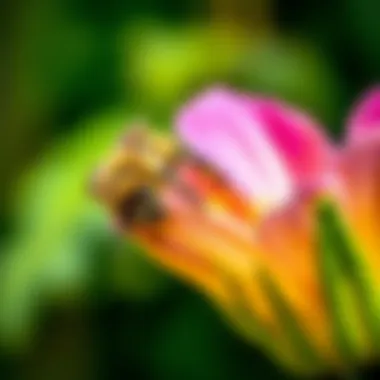
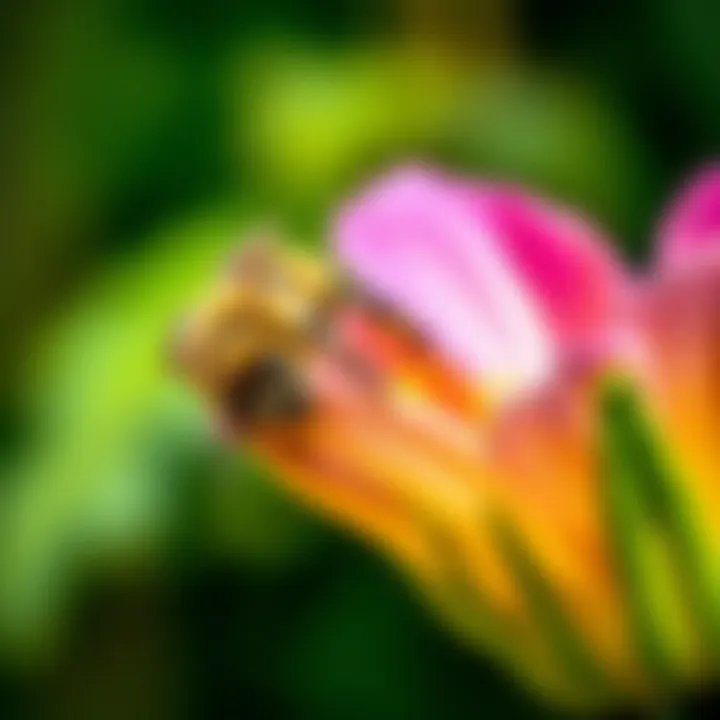
Intro
Honeybees are not just random insects buzzing around your backyard; they are intricate beings with a vital role in our ecosystem. These small creatures populate various landscapes, from urban gardens to agricultural fields, performing the essential task of pollination. This not only aids the plants they visit but also enhances biodiversity, ultimately benefiting humans who rely on these plants for food.
As we explore the world of honeybees, we'll dive into their biology, social structure, and the challenges they face in today’s environment. By understanding their lives, we can appreciate their significance and the intricate relationship between honeybees and agriculture. There’s more to honey than just what you find in a jar; it’s an essential component of our food system, linking directly to the production of fruits, vegetables, and nuts. Moreover, these insects inspire conservation efforts that help preserve not only their species but also the planet's health.
This journey aims to serve as a guide, crafting a narrative that not only informs but also motivates readers, particularly agriculture enthusiasts and farmers, to engage in practices that support these vital pollinators. Let’s get started!
Foreword to Honeybees
Honeybees are more than just producers of sweet nectar; they are a crucial part of our ecosystem's fabric. Understanding their lives opens the door to appreciating the delicate balance of nature and our agricultural systems. In this article, we aim to dissect the multifaceted world of honeybees, shedding light on their biological structure, social hierarchies, and the vital ecological services they provide.
By delving into the specifics of honeybee anatomy and behavior, we can grasp the complexity of these creatures. It's not all about honey; it’s about pollination, biodiversity, and the future of food production. Each detail we uncover about honeybees enriches our understanding of how these insects contribute significantly to our own lives through agriculture.
Definition and Importance
A honeybee belongs to the genus Apis, known for their habit of living in organized colonies. The most common species, Apis mellifera, can be found on every continent except Antarctica. Their importance cannot be overstated. Honeybees are key pollinators, facilitating the reproduction of flowering plants, which in turn supports a myriad of animal species and human food sources. In fact, it’s estimated that one out of every three bites of food we consume depends on pollination, primarily by bees.
Honeybees produce honey, a natural sweet substance that not only serves as food for humans but also benefits the bees through energy reserves. Additionally, their wax is utilized in various industries, from skincare products to candles. Thus, the role of honeybees extends far beyond the hive, intertwining with multiple aspects of human endeavors and ecological health.
Overview of Honeybee Species
There is a rich variety of honeybee species, each adapted to different environments and exhibiting unique behaviors. The most prevalent ones include:
- Apis mellifera: This species is perhaps the most well-known and widely studied. Found primarily in Europe, Asia, and Africa, they have been introduced around the world and are crucial to commercial agriculture.
- Apis cerana: Commonly known as the Asian honeybee, this species is smaller than A. mellifera and has adapted remarkably well to local conditions in Asia, showcasing resilience in diverse habitats.
- Apis dorsata: Known as the giant honeybee, it builds its nests in high trees. Their colonies can be quite large, sometimes numbering in the thousands. They are often found in Southeast Asia.
- Apis florea: This species is notable for its small size and unique nesting behavior, building small open nests often found in bushes.
Each species reflects the incredible versatility of honeybees, showing how they've adapted to their surroundings while providing various ecological benefits. Understanding these differences allows us to appreciate the extensive contribtion of honeybees to both agriculture and biodiversity.
Anatomy of the Honeybee
Understanding the anatomy of honeybees is an essential aspect of appreciating their role in our ecosystem and agriculture. The intricate biological structures of these insects allow them to perform vital functions like foraging, communication, and reproduction. Each part of the honeybee is uniquely adapted to ensure the hive's survival, making it crucial for farmers and enthusiasts to grasp how these remarkable creatures operate.
Physical Structure
The honeybee’s body consists of three main segments: the head, the thorax, and the abdomen. Each section plays a distinct role in how the bee interacts with its environment.
- Head: This segment houses the compound eyes, antennae, and mouthparts. The compound eyes enable honeybees to see a wide range of colors, essential for identifying flowers. Antennae serve as sensory organs, detecting smells and tastes, crucial for communication within the hive.
- Thorax: Home to the bee's wings and legs, the thorax is the powerhouse of movement. Honeybees have two pairs of wings that beat rapidly, allowing for agile flight during foraging trips. Their legs are equipped with structures called pollen baskets, allowing them to collect and transport pollen back to the hive.
- Abdomen: The abdomen contains the digestive and reproductive organs. It ends with the stinger, used primarily for defense. Inside, honeybees have a honey stomach, a special organ where nectar is stored before being regurgitated and turned into honey.
This physical design not just helps honeybees forage efficiently but also ensures their productivity in producing honey. By understanding these structures, farmers can better appreciate the importance of maintaining healthy bee populations.
Reproductive Anatomy
Honeybee reproduction is a fascinating topic, primarily because of the different roles each bee plays within the hive. The queen, drones, and worker bees each have specialized reproductive systems.
- Queen Bee: The queen is the only female bee capable of laying eggs. Her abdomen is elongated to accommodate this function. A queen can lay up to 2,000 eggs per day during peak season, which is vital for maintaining hive population. The health of the queen directly impacts the overall health and productivity of the colony.
- Drones: Drones are male bees, and their sole purpose is to mate with a queen. They have larger bodies and lack stingers, making them flight specialists. After mating, drones typically die, highlighting the self-sacrificial nature of their role in the hive's reproductive cycle.
- Worker Bees: Worker bees are sterile females and take on various roles, including foraging, nursing, and hive maintenance. Their reproductive anatomy is less developed than the queen's, focusing instead on collecting nectar and pollen and taking care of the larvae.
The various reproductive strategies and anatomical differences highlight the complexity of honeybee society. A healthy balance of all these roles is essential for the sustainability and vitality of the hive.
The remarkable anatomy of honeybees is not just a marvel of nature; it’s a critical factor that farmers must understand to effectively engage with these pollinators and preserve their habitats.
For more detailed scientific insights, consider resources like Wikipedia on Honeybees or Britannica's Overview. Understanding these organisms helps bridge the gaps between agricultural practices and natural ecosystems.
Honeybee Behavior
Honeybee behavior is a fascinating blend of instinct, communication, and social organization. Understanding these behaviors is crucial as they shape the very fabric of the hive, influence pollination efficiency, and impact agricultural output. Bees are not just makers of honey; they're sophisticated social creatures with behaviors that have evolved over millions of years. This section will explore key aspects of honeybee behavior that highlight their importance in ecosystems and agriculture.
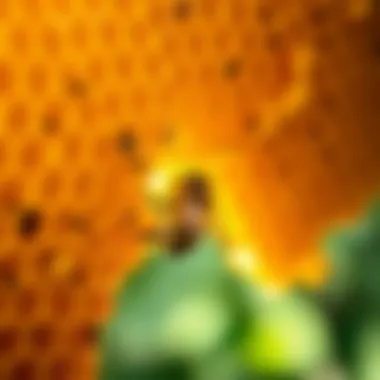

Social Structure of the Hive
The social structure of honeybee hives is remarkable, showcasing a complex societal framework. Honeybees live in colonies that can number anywhere from a few thousand to over sixty thousand individuals. Within these colonies, there are three primary types of bees: the queen, the workers, and the drones.
- The Queen: The heart of the hive, the queen bee is the sole reproductive female. She can lay up to 2,000 eggs daily during peak seasons. Her pheromones regulate many of the hive’s activities, effectively keeping the colony united.
- Workers: These are the female bees, and they perform all the labor in the hive. Tasks include foraging for nectar and pollen, tending to the queen and brood, cleaning the hive, and defending the colony. The organization of labor is dynamic, with workers transitioning through various roles as they age.
- Drones: Male bees whose primary role is to mate with a queen from another colony. Drones have no stingers and do not participate in foraging or hive maintenance. Their life is short and primarily ends after mating.
The hive functions almost like a single organism. Decision-making happens collectively; for instance, when it’s time to swarm or relocate, scouts signal the location of potential new homes. This collaboration highlights the intelligence and adaptability of honeybee societies, making them crucial not only for the survival of their species but also for the broader ecological landscape.
Foraging and Communication
Foraging and communication are essential behaviors that enable honeybees to gather food and resources vital for colony survival. Honeybees demonstrate remarkable ability to locate tasty flowers rich in nectar and pollen through various sophisticated methods.
One of the most fascinating aspects of foraging is the waggle dance. This complex behavior allows bees to communicate the distance and direction of food sources to hive mates. When a bee finds a promising flower patch, it returns to the hive and performs a dance, waggling its body while moving in a figure-eight pattern. The angle in relation to the sun indicates the direction, while the duration of the waggle communicates the distance.
- Benefits of the Waggle Dance:
- Efficiently directs fellow foragers.
- Enhances food procurement, contributing to hive sustainability.
Honeybees also exhibit a remarkable sense of cooperation. Foragers often recruit other bees by boosting the hive's sense of urgency when food sources are plentiful. This collective effort means that when conditions are right, a well-coordinated group can forage rapidly, gathering resources to support the entire colony.
In summary, honeybee foraging and communication underscore their collaborative nature and adaptability. As bees pollinate across vast networks of plants, they play a fundamental role in maintaining biodiversity. Their behaviors not only ensure the survival of their colonies but also support agricultural systems worldwide.
"The intricate dance of honeybees not only sustains their colonies but is the lifeblood of many ecosystems, illustrating nature’s delicate balance."
For further reading, consider visiting Wikipedia on Honeybee Behavior, or check out insightful articles on Britannica regarding their social structures and foraging habits.
Pollination and Ecosystem Services
Honeybees play a pivotal role in the ecosystem, particularly in the context of pollination. Their activities not only sustain their colonies but are integral to global food production and the health of surrounding habitats. The process of pollination involves transferring pollen from the male anthers of flowers to the female stigma, facilitating fertilization. It’s like an ancient dance that flowers and bees have perfected over millions of years.
Role in Agriculture
In agriculture, honeybees are vital agents. A staggering one-third of the food we consume is made possible thanks to their relentless work. They pollinate a variety of crops, including fruits, vegetables, nuts, and seeds. For instance, crops such as almonds, apples, and blueberries rely heavily on these industrious insects. Without honeybees, the yields of these crops would drop drastically. Here’s a snapshot of how honeybees impact agriculture:
- Increased Yields: Fields populated with honeybee hives see significantly higher yields. For example, studies show that almond orchards with honeybee hives produce around 10% more fruit than those without.
- Quality of Produce: Pollinated fruits tend to be larger and more uniform, appealing to consumers and retailers alike. Think of a plump apple versus a smaller, misshapen one—consumers generally gravitate towards the former, boosting sales.
- Diverse Crop Production: The pollination services provided by honeybees allow farmers to diversify their crops. This not only benefits the farmers economically but also supports ecosystem health by preventing monoculture practices.
"If honeybees disappeared off the surface of the globe, then man would only have four years left to live. No more bees, no more pollination, no more plants, no more animals, no more man." – Albert Einstein
Contribution to Biodiversity
The influence of honeybees stretches beyond agriculture; they help maintain biodiversity in ecosystems. When honeybees pollinate wildflowers, they support entire food chains. This interaction leads to broader flora diversity, which in turn nurtures various fauna. Consider the relationship:
- Wildflower Populations: Honeybees enhance wildflower growth, leading to vibrant, diverse plant life that supports other insects and wildlife. This makes ecosystems more resilient against environmental stressors.
- Habitat Support: A rich diversity of flora creates habitats for countless species. Birds, small mammals, and countless insects depend on these plants for food and shelter.
- Healthy Ecosystems: The balance of biodiversity ensures healthy ecosystems, making them more robust in facing climate change, diseases, and habitat loss. More variety means that a system can adapt and thrive even when one species struggles.
In sum, the interconnected web of life, fueled by honeybee activity, is a testimony to their importance. Their role in agriculture and contribution toward biodiversity cannot be overstated. Understanding these factors can inspire more sustainable practices and conservation efforts for these remarkable creatures.
Threats to Honeybee Populations
Understanding the various threats faced by honeybees is crucial to appreciating their role in our ecosystems and agriculture. Honeybees are essential for pollination, which supports a significant portion of our food supply. However, their populations are in decline due to several factors. This section will explore the major threats, shedding light on how they affect honeybee health and numbers.
Pesticides and Chemical Exposure
Pesticides are one of the most pressing concerns impacting honeybee populations. These chemicals, used to protect crops from pests, can have dire consequences for the bees. For instance, neonicotinoids, a common class of pesticides, influence honeybee behavior and metabolism. They can cause disorientation, impair foraging abilities, and even lead to hive abandonment. Exposure to these substances can kill bees directly or weaken their immune systems over time, making them more susceptible to other threats.
It's important to recognize that not all pesticide use is harmful in the same way. Some farmers employ integrated pest management (IPM) practices, which aim to minimize chemical usage. Nonetheless, maintaining awareness of pesticide application methods and timings is essential for protecting honeybee populations. Simple measures such as reducing pesticide use during blooming periods can be beneficial.
A bee-friendly approach to pest management can help ensure the health of honeybees while maintaining crop yields.
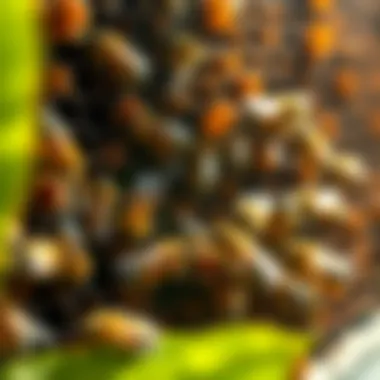
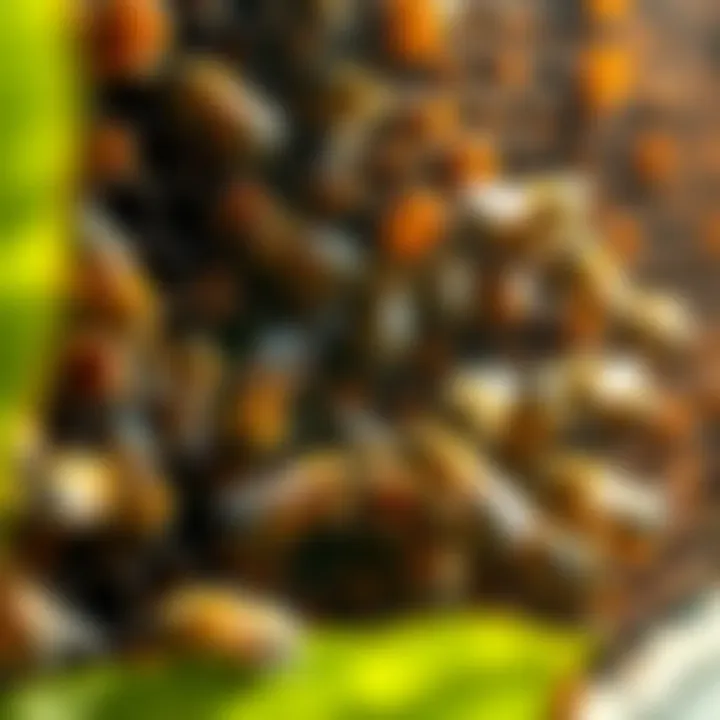
Habitat Loss
Habitat loss equally poses a significant threat to honeybees. As urbanization expands and agricultural lands are developed, natural habitats that provide food and nesting sites for bees are being destroyed. This reduction in available wildflowers means less forage for honeybees, which rely on a healthy diversity of plants for nectar and pollen throughout the seasons. Additionally, monoculture farming practices can further exacerbate this issue by creating landscapes that are inhospitable to bees.
Restoring natural habitats and implementing practices that support diverse planting in agricultural areas can help mitigate this problem. Creating bee gardens or preserving wildflower patches not only aids honeybee populations but can also enhance pollination for surrounding crops.
- Preserve natural habitats
- Restore wildflower areas
- Implement crop diversity in agricultural practices
Diseases and Parasites
Lastly, diseases and parasites present a hefty challenge to honeybees. Varroa mites are perhaps the most notorious pests affecting honeybee colonies. These tiny parasites latch onto bees, feeding on their bodily fluids and transmitting various viruses, which can decimate populations. Detecting Varroa infestations promptly can be the difference between a thriving hive and one that collapses. Other ailments, such as Nosema and American Foulbrood, also place immense stress on colonies, leading to poor health and decreased resilience.
Beekeepers play a vital role in managing these threats. Regular monitoring, maintaining hive cleanliness, and employing treatment strategies are all part of effective hive management. Educating beekeepers about signs of diseases can help catch problems early, allowing for timely interventions.
In summary, addressing the multifaceted threats to honeybee populations is critical not only for the bees themselves but for the broader ecosystem and agriculture. Farmers and enthusiasts alike can adopt strategies to combat these challenges, ensuring the plight of honeybees does not escalate any further.
Beekeeping Practices
Beekeeping practices are not just a secondary concern for those interested in honeybees; they are a vital part of maintaining healthy populations and fostering a deeper connection between humans and these industrious insects. The significance of this topic extends beyond simply harvesting honey; it also encompasses the principles of sustainability, environmental stewardship, and the sheer joy of engaging with nature. Beekeeping can serve multiple purposes—from ensuring consistent honey production to supporting ecological health through pollination.
Starting Your First Hive
Diving into beekeeping can feel like stepping into a whole new world, filled with buzzing excitement and profound responsibility. When considering starting your own hive, the first step involves choosing the right location. Ideally, this should be a sunny spot, shielded from harsh winds, yet positioned close to blooming plants for forage.
You'll also need to gather essential gear. This includes a hive kit, which often contains frames, foundation, and the hive body. Don't forget protective clothing and tools such as a smoker and hive tool to make your job easier and safer. Some key points to take into account are:
- Local Regulations: Check if there are any local guidelines regarding beekeeping in your area. Regulations can vary widely from one municipality to another.
- Bee Species Selection: Different species of bees have various temperaments and productivity levels. Italian honeybees are known for their gentle nature and prolific honey production, making them an excellent choice for beginners.
- Getting Bees: You can obtain your bees from local beekeepers, bee supply stores, or through mail order from reputable sellers. Package bees or nucs (nucleus colonies) are popular options for new beekeepers who are just starting.
Maintaining Hive Health
Once you've got your hive up and buzzing, the focus shifts to maintaining the health of your colony. Healthy bees are productive bees, and managing their well-being means vigilantly watching for diseases, pests, and nutritional deficiencies. Here are a few strategies for keeping your hive thriving:
- Regular Inspections: Conduct inspections every 7 to 14 days, looking for signs of disease or unhealthy behavior. Make sure to check for adequate queen presence and egg-laying patterns.
- Pest Management: Varroa mites pose a significant threat to honeybee colonies. Monitor your bees for mites and treat as necessary using organic methods when possible to minimize chemical exposure.
- Feeding Options: In times of scarcity, like winter or during early spring, feeding your bees sugar syrup or protein patties can support their health. Just remember to feed responsibly, avoiding over-reliance on artificial foods.
"Proper maintenance of a hive not only ensures the bees thrive but also enhances their productivity, resulting in a richer honey yield."
Harvesting Honey
As the season progresses and your bees begin producing honey, the excitement of harvesting this liquid gold is palpable. However, honey extraction should be done with commitment and care. Once the frames are capped, it’s time to consider harvesting. Here are some steps to follow:
- Prepare Your Equipment: Ensure that all your extraction tools, including an extractor, have been cleaned and sanitized to maintain honey quality.
- Harvest Frames: Using your hive tool, gently remove the frames from the hive. This requires a delicate touch as you do not want to disturb the bees unnecessarily.
- Extract Honey: Place the uncapped frames into the extractor. The centrifugal force will pull the honey from the cells into the bottom of the extractor, ready for collection. After extracting, strain the honey to remove any unwanted particles, and then bottle it in clean jars.
- Store Properly: Store your honey in a cool, dry place, away from sunlight to preserve its natural flavors and nutrients.
In summary, beekeeping practices are lifelong learning experiences that provide a fulfilling and rewarding relationship with honeybees. Each aspect, from starting a hive to maintaining its health and harvesting honey, plays a crucial role in ensuring the sustainability of honeybee populations and enhancing our shared environment.
Honey and Its Varieties
Honey is not just a sweet substance; it embodies a complex interplay of elements that greatly influence its characteristics and benefits. Each type of honey, dictated by the floral sources and the processing methods used, offers unique flavor profiles, colors, and health benefits. Understanding these varieties gives insight into the multifaceted role of honey in both culinary arts and holistic health.
Types of Honey
When it comes to honey, the types are as vast as the fields where bees gather nectar. Here are a few notable varieties:
- Wildflower Honey: This type is a mix from various flowers. Its flavor changes with the seasons and can be fruity, floral, or earthy.
- Clover Honey: Known for its light flavor and color, clover honey is highly popular in North America. It has a mild sweetness, making it great for sweetening beverages and baking.
- Manuka Honey: Originating from New Zealand, this honey has gained fame for its potent antibacterial properties, owing to the unique compound Methylglyoxal. It’s often used in medicinal applications.
- Buckwheat Honey: Dark in color and rich in minerals, buckwheat honey has an earthy flavor. It’s commonly praised for its high antioxidant content.
- Orange Blossom Honey: Sweet and citrusy, this honey is harvested from orange tree blossoms, providing a delightful addition to many recipes.
Each honey type reflects its environment, revealing nuances in flavor and health benefits that are especially important for farmers and food enthusiasts looking to enhance their culinary creations.


Health Benefits
Honey isn't merely a delightful sweetener; it's packed with various health benefits, making it a staple in many households. Here are a few notable advantages:
- Antioxidants: Honey contains a range of antioxidants, helping to combat oxidative stress in the body. The darker the honey, generally, the higher the antioxidant levels.
- Wound Healing: Some types, especially Manuka honey, are known for their wound-healing properties. They can help in fighting infections and promoting efficient healing when applied topically.
- Cough Suppressant: Honey can be an effective remedy for throat irritation. Its soothing properties can help ease cough and throat discomfort, especially when mixed with warm water or herbal teas.
- Digestive Aid: Honey can act as a prebiotic, nourishing the good bacteria in the gut, thereby supporting overall digestive health.
- Energy Booster: As a natural source of carbohydrates, honey provides a quick energy boost, which is especially beneficial for athletes and those engaged in physical labor.
"Honey is nature's most effective sweetener, packing a nutritious punch." Each type has its specific contributions, often making it a natural choice for those seeking healthier options in their diets.
In summary, exploring the varieties of honey opens doors to a wider understanding of its immense value. From clover to Manuka, each type not only adds diverse flavors to culinary dishes but also offers notable health advantages that can enhance wellness and vitality.
The Future of Honeybees
The lives of honeybees are intertwined with our environment in ways that are both intricate and vital. Their future hangs in the balance, influenced by various transformations in agriculture, ecological patterns, and human attitudes toward conservation. Addressing the multifaceted challenges that honeybees face is not just an ecological responsibility; it is an essential component in maintaining a stable food supply and preserving biodiversity for generations to come.
Conservation Initiatives
A host of conservation initiatives have sprouted up across the globe to protect these industrious pollinators. Governments, NGOs, and local communities are joining hands to forge a path toward sustainability. This collaboration comes in various forms:
- Pollinator-Friendly Habitats: Creating spaces where bees can thrive is one of the prime targets. Establishing wildflower meadows, botanical gardens, and integrated farming systems not only provides bees the nectar they need but boosts the ecosystem as a whole.
- Legislation and Regulations: Tightening laws on pesticide usage and encouraging organic farming practices are pivotal steps. These measures aim to minimize chemical exposure, fostering a safer environment for honeybees.
- Public Awareness Campaigns: Educating the public about the role of honeybees and the challenges they face is key. Programs that engage local communities in beekeeping and the significance of every bee can inspire a generational shift in how we interact with nature.
With these initiatives, the aim is not just survival but a flourishing of bee populations that can serve as a barometer for ecological health.
"Without bees, the pollination of many crops would collapse, leading to food scarcity and economic challenges. Embracing conservation is not just about love for nature; it's a necessity for survival."
Innovations in Beekeeping
As the challenges swirl around honeybees, innovative beekeeping practices are emerging, reshaping how beekeepers manage their hives and ensure bee health. These innovations blend traditional knowledge with modern science, offering promising solutions:
- Smart Hives: Technological advancements have led to the introduction of smart hives equipped with sensors that monitor hive temperature and humidity. This data guides beekeepers in making informed decisions, potentially avoiding stressful conditions that could lead to colony collapse.
- Selective Breeding: Beekeepers are increasingly focusing on breeding more resilient bee strains that can withstand diseases or environmental stressors. The aim is to develop a stock of bees that better suits local conditions and agricultural practices.
- Education and Training: Online courses and workshops are expanding accessibility to beekeeping knowledge. This democratization empowers individuals from all walks of life to participate in conservation efforts, contributing to the diversity and strength of future bee populations.
With these emerging tools, beekeeping is transforming into a more precise and compassionate practice, aligning economic interests with ecological needs. By looking to the future, we can forge a more harmonious relationship with honeybees and ensure their crucial role in our world remains intact.
Culmination
The importance of honeybees cannot be overstated. These industrious insects play a crucial role in maintaining the ecological balance and supporting agricultural practices fundamental to human survival. Through various sections of this article, we've noted how honeybees contribute significantly—not only by pollinating plants essential for food production but also by facilitating the thriving of diverse ecosystems. As we face increasing challenges such as habitat loss, pesticide exposure, and climate change, the urgency to understand and protect these vital pollinators becomes even more apparent.
One of the key takeaways is that honeybees are not just producers of honey. They are essential contributors to the growth of fruits, vegetables, nuts, and seeds. Without them, many crops would yield significantly less, leading to food scarcity issues. Their social structures and foraging behaviors reflect their adaptability and the intricate relationships they maintain within their environments.
"Honeybees are nature's little engines, tirelessly working to sustain the agricultural systems that feed our planet."
The benefits of promoting bee-friendly practices and conservation efforts will not only help to secure bee populations but also bolster the agricultural economy. This symbiotic relationship between honeybees and humans highlights the importance of educating farmers about sustainable beekeeping practices.
In essence, the continuation of both honeybee and human life hinges on our actions today and tomorrow. Understanding these fascinating creatures is the first step towards ensuring their survival—and, consequently, our own.
Recap of Honeybee Importance
To sum it up, honeybees are fundamentally important to agriculture and the ecosystem. The intricate pollination process they undertake helps ensure that a myriad of plants reproduce effectively. This not only sustains biodiversity but also enhances crop yield quality. The nutritional value of the food we consume is directly tied to the health of pollinator populations.
Some critical points to keep in mind:
- Honeybees account for the pollination of approximately 75% of flowering crops.
- They impact more than one-third of the food humans consume.
- Supporting honeybee health promotes overall ecological health.
Call to Action for Beekeeping and Conservation
The conversation around honeybee conservation should not stop here. It is imperative for both agricultural professionals and enthusiasts to take action to support these creatures. Starting with simple steps like planting bee-friendly flowers and reducing pesticide use can foster healthier habitats for bees.
Additionally, participating in beekeeping not only provides firsthand experience but also contributes to the local ecosystem. Educational programs and local beekeepers can offer guidance for those interested in maintaining hives. Here’s how one can get started:
- Join Local Beekeeping Associations: Engaging with seasoned beekeepers provides invaluable knowledge and resources.
- Participate in Workshops: These sessions offer hands-on experience and promote the importance of bees.
- Advocate for Bee-Friendly Practices: Promote awareness about the significance of reducing chemical use in farms and gardens.
Supporting bees is notan once-off act; it's a continuous journey that involves the community as a whole. By making informed and conscientious choices today, we can pave the way for healthier ecosystems and bountiful harvests tomorrow.
For more information on honeybee conservation initiatives, check resources like USDA or University of California Agriculture and Natural Resources.



